
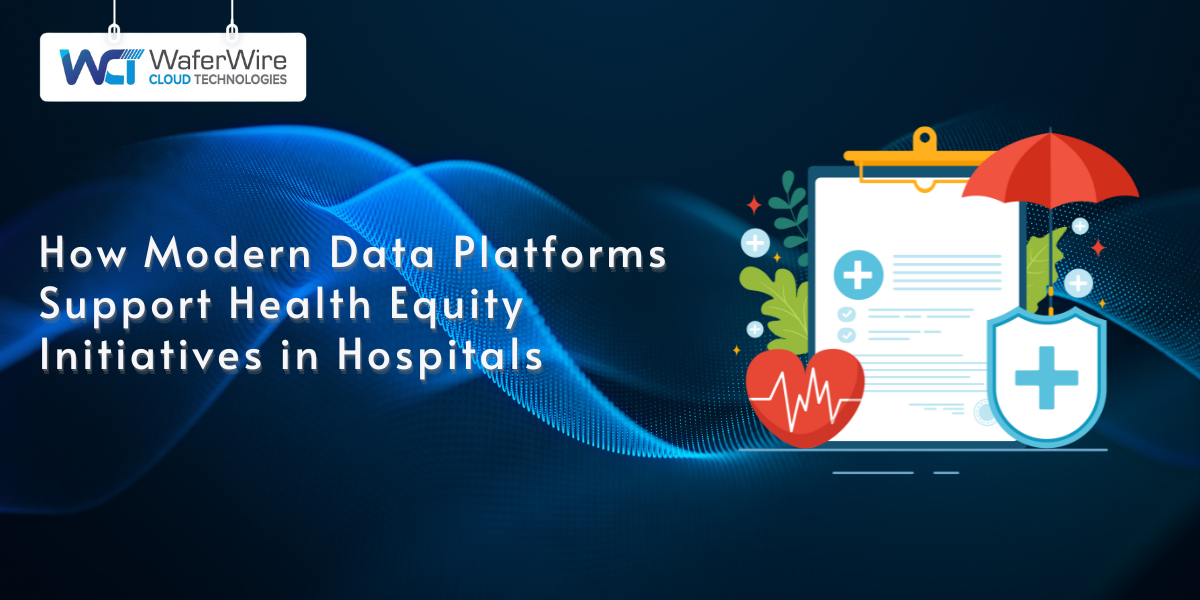
While many hospitals collect lots of information, outdated systems make it hard to use it to improve care and outcomes. This can affect the quality of health equity in healthcare.
Modern data platforms bridge this gap by combining data from EHRs, labs, and other systems to provide clear insights and data analysis. They help hospital staff make informed decisions and spot gaps in care. With better visibility and coordination, hospitals can deliver fair and improved care for all patients.
This article explains how modern data platforms support health equity in healthcare, outlines their key features, and provides strategies for utilizing them to enhance patient outcomes.
Before exploring specific platform features, it’s important to understand why health equity in healthcare matters.
Health equity in healthcare means that every patient has a fair chance to achieve their best possible health, no matter their race, income, location, or other social factors. It ensures care is accessible, effective, and tailored to the needs of all patients.
However, many hospitals still face barriers in achieving this goal:
This is where data plays a crucial role. By turning raw information into actionable insights, modern data platforms help hospitals make informed decisions that promote health equity in healthcare.
With this understanding of how data supports health equity, the next step is to explore the components of modern data platforms and how they help hospitals deliver fair and effective healthcare.
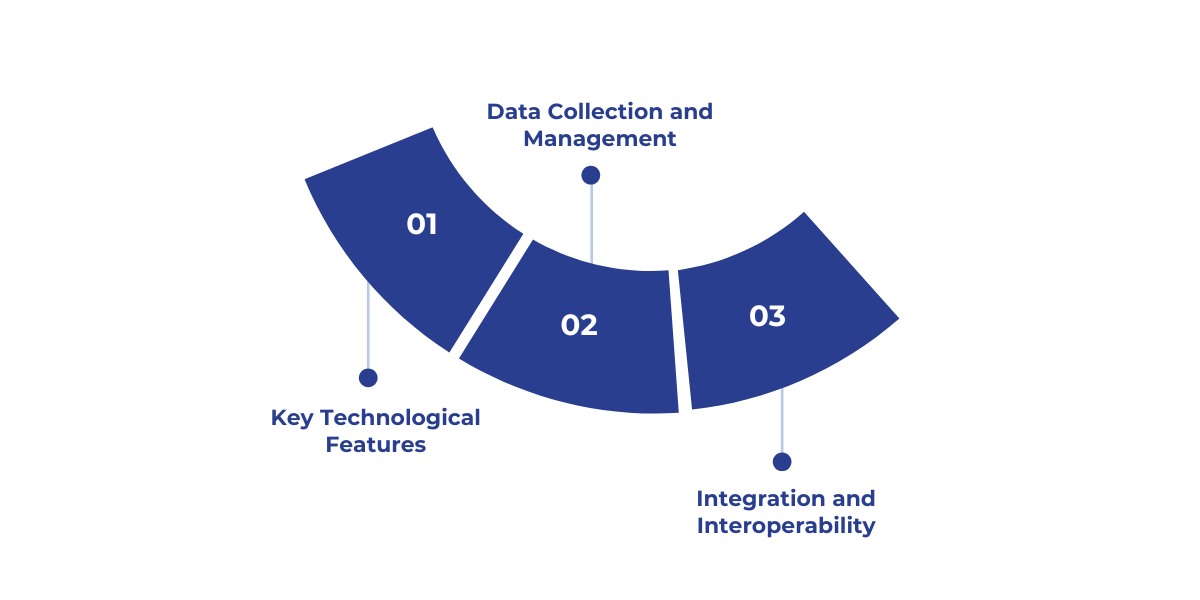
Modern data platforms form the foundation for hospitals to manage information efficiently and use it to promote health equity in healthcare. These platforms combine key technological features, robust data management, and seamless data integration to deliver actionable insights that improve patient care.
Several key components include:
Together, these components enable hospitals to use data strategically, enhance decision-making, and support equitable healthcare delivery for all patients.
Also read: How can you achieve healthcare data security?
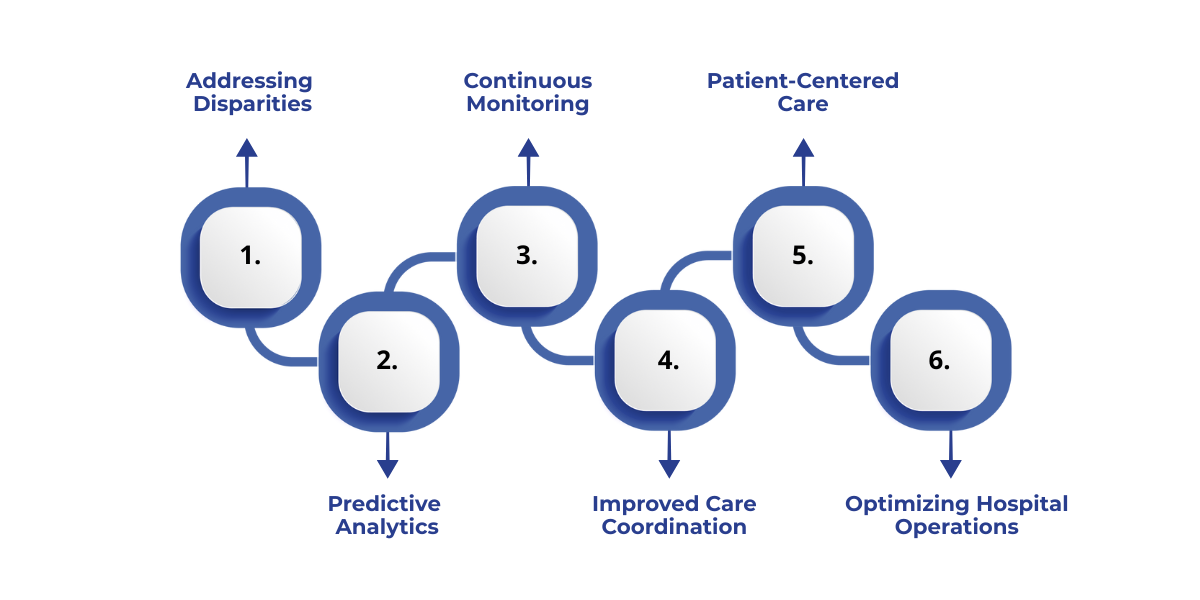
Modern data platforms help hospitals improve health equity in healthcare by combining clinical, operational, and community data. This allows hospitals to uncover gaps in care, deliver personalized treatments, and continuously improve patient outcomes.
To begin, hospitals must identify and address disparities in care.
Hospitals can gather data from EHRs, labs, telehealth systems, and community sources to spot differences in care.
For instance, WaferWire’s Unified Patient View creates a complete profile for each patient, including medical history and social factors. With this clarity, hospitals can implement targeted programs such as preventive care and follow-up interventions.
Once disparities are visible, hospitals can use predictive analytics to support fair care.
By analyzing integrated data through Fabric, hospitals can forecast patient risks and prioritize timely interventions.
For example, tools like WaferWire’s Care Management solutions and Azure Health Data Services (AHDS) help create personalized treatment plans, ensuring care is effective and equitable across all patient groups.
After predictive analytics, hospitals benefit from continuous monitoring and feedback loops.
Data platforms allow real-time tracking of patient vitals through IoT devices, Azure Health Bot, and Text Analytics for Health. Hospitals can gather clinician and patient feedback, adjust care strategies quickly, and evaluate the impact of equity-focused programs.
To improve overall performance, better care coordination is critical.
Integration of provider and payor data ensures smooth workflows and collaboration across teams.
For example, WaferWire’s Life Sciences Data Models and Health Document Intelligence streamline operations, reduce duplication, and support research, enhancing overall patient outcomes.
With improved coordination, hospitals can expand remote and patient-centered care.
Telehealth, virtual visits, and AI-driven engagement tools make care accessible to underserved populations. Analytics dashboards help hospitals track trends, identify gaps, and implement interventions to improve health equity.
Finally, hospitals gain operational insights and decision support to optimize resources and improve efficiency.
Hospitals can better manage staffing, resources, and patient flow. Data platforms provide actionable insights to ensure timely care and efficient use of hospital resources.
Using data in these ways allows hospitals to move from reactive approaches to proactive solutions, ensuring that every patient receives the attention and resources they need.
WaferWire services, including HLS implementation, FHIR data migration, and modernization with Microsoft Fabric, help hospitals build strong data platforms that advance long-term health equity initiatives.
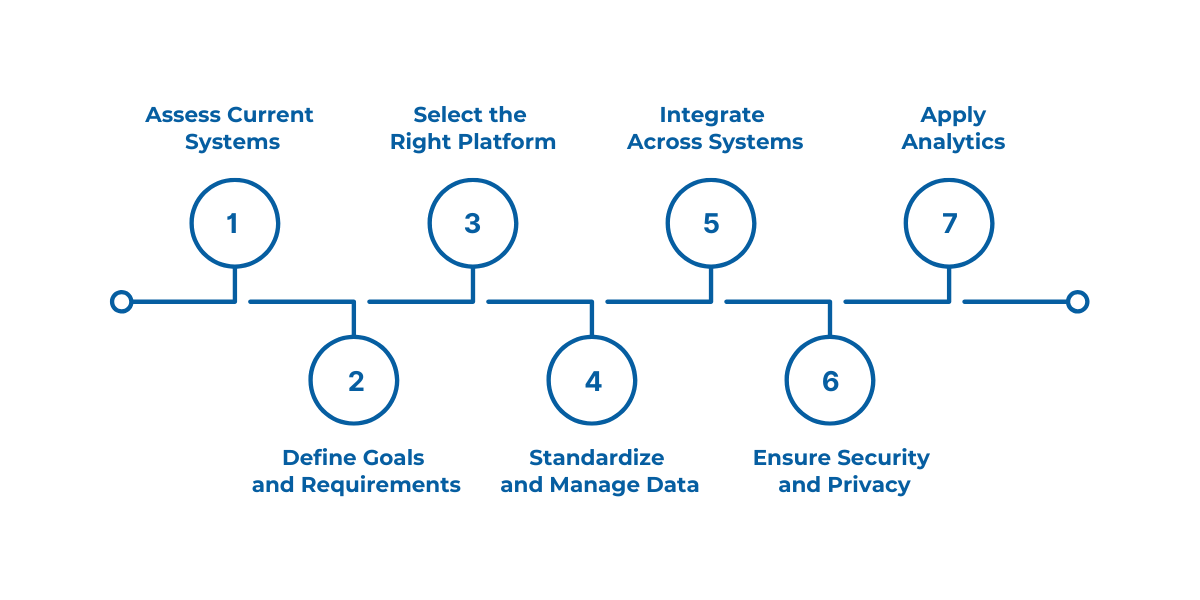
Implementing a modern data platform enables hospitals to promote health equity by consolidating patient data, identifying care disparities, and facilitating informed decision-making. Success requires precise planning, defined goals, and attention to technical and operational challenges.
The steps below outline how hospitals can deploy these platforms effectively while addressing common obstacles and best practices.
Hospitals should begin by reviewing all existing data sources, including electronic health records, lab systems, and administrative tools such as Data analytics and AI. Understanding the current infrastructure is essential for identifying gaps and planning an effective deployment.
Challenges: Data often exists in silos, systems may be outdated, and ownership of data can be unclear.
Best Practices: Conduct a detailed inventory of all systems, map data flows across departments, and involve stakeholders to ensure a comprehensive assessment.
Once systems are assessed, hospitals must define the objectives for the platform, including real-time reporting, predictive analytics, and initiatives to reduce care disparities.
Challenges: Departments may have conflicting priorities, and compliance requirements can complicate goal setting.
Best Practices: Align platform objectives with the hospital’s strategic goals, prioritize high-impact use cases, and include legal and compliance teams early in planning.
Choosing an appropriate platform like cloud-based, on-premises, or hybrid is crucial for supporting analytics, AI and machine learning, and interoperability.
Challenges: Budget limitations, future scalability concerns, and compatibility with existing systems can complicate selection.
Best Practices: Evaluate multiple solutions, consider long-term growth, and ensure AI integration with current systems to maintain smooth operations.
Data must be cleaned, harmonized, and structured to ensure accuracy, consistency, and usability for analytics.
Challenges: Data inconsistencies, missing fields, and poor quality can reduce reliability.
Best Practices: Automate data cleaning, enforce consistent metadata standards, and continuously monitor data quality to maintain trust in insights.
Integration of EHRs, billing systems, and clinical tools creates a unified view of patient care and ensures insights reach the right stakeholders at the right time.
Challenges: Complex architectures and resistance from staff can slow integration.
Best Practices: Adopt interoperable standards such as FHIR, provide training and support, and maintain open communication across departments.
Also Read: Understanding and Strategizing the Use and Costs of Microsoft Fabric Capacity
Protecting sensitive patient data is essential for regulatory compliance and maintaining trust.
Challenges: Cybersecurity risks and evolving healthcare regulations increase complexity.
Best Practices: Use strong encryption, implement role-based access, conduct regular audits, and update policies to stay compliant and secure.
Predictive analytics can highlight disparities, inform interventions, and support continuous improvement in patient care.
Challenges: Inaccurate models or incomplete feedback can limit effectiveness.
Best Practices: Monitor outcomes regularly, validate analytical models, and engage clinicians in reviewing insights to guide actionable interventions.
By following these steps, hospitals can deploy modern data platforms efficiently, overcome implementation challenges, and transform patient data into actionable insights that promote health equity and improve care outcomes.
Hospitals often face challenges in giving fair and effective care because patient data is scattered, resources are limited, and patients have different needs.
Modern data platforms help by connecting all this information and giving hospitals clear insights to improve care.
Here’s how they make a difference:
By using modern data platforms, hospitals can give care that is fair, fast, and focused on what patients really need, helping everyone stay healthier.
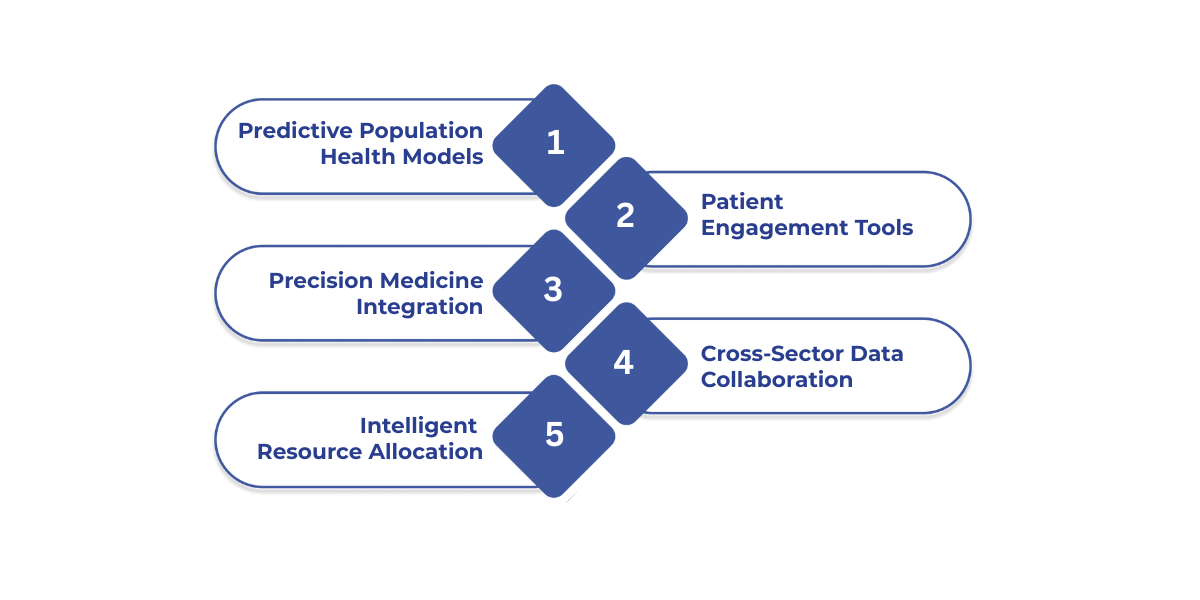
As new technologies emerge, hospitals are improving how they collect, analyze, and use data to support health equity in healthcare. By combining clinical, social, and community information, modern platforms provide a fuller view of patient needs and enable more precise strategies, timely interventions, and fairer care for all.
Key trends shaping the future of data platforms include:
Also Read: Technology Insights and Trends for the Digital Age
With these innovations, modern data platforms will empower hospitals to make faster, fairer decisions and build a future-ready healthcare system that delivers equitable outcomes for all patients.
Integrating modern data platforms in hospitals strengthens efforts to promote health equity in healthcare by enabling data-driven decision-making, real-time insights, and targeted interventions.
By utilizing predictive analytics, AI, and integrated data systems, hospitals can identify disparities, improve patient outcomes, and ensure equitable care across all populations.
At WaferWire, our healthcare data experts can guide your hospital through the process of implementing modern data platforms, from initial setup to advanced customization and analytics.
Contact us today to realize the full potential of data-driven health equity initiatives and transform patient care efficiently.
1. How do modern data platforms support health equity in healthcare?
Modern data platforms collect and analyze patient data from multiple sources, helping hospitals identify disparities in care and implement targeted strategies to ensure equitable treatment across all populations.
2. Can predictive analytics improve health equity in healthcare?
Yes, predictive analytics within these platforms can forecast risks for vulnerable populations, allowing hospitals to take proactive steps that improve outcomes and reduce disparities.
3. Are modern data platforms compatible with existing hospital systems?
Yes, they integrate seamlessly with electronic health records (EHRs), lab systems, and other hospital technologies, ensuring smooth data flow and better coordination of care.
4. How do hospitals ensure patient data privacy while using modern data platforms?
Platforms follow strict security protocols, including encryption, access controls, and compliance with regulations like HIPAA, maintaining patient privacy while supporting health equity initiatives.
5. How do hospitals measure success in promoting health equity in healthcare?
Hospitals track metrics such as reduced treatment disparities, improved health outcomes for underserved populations, patient satisfaction, and timely access to care, enabling continuous improvement.

